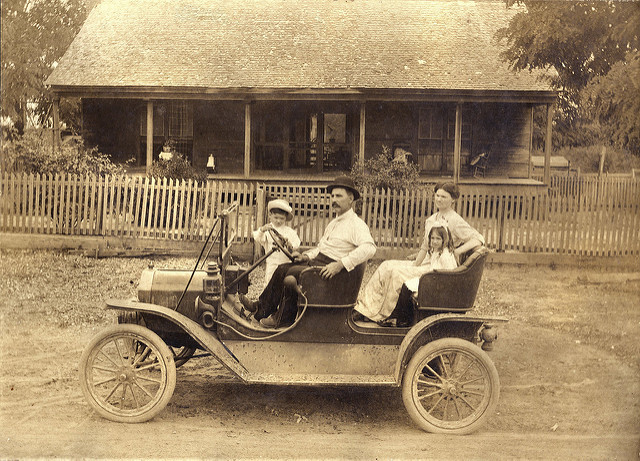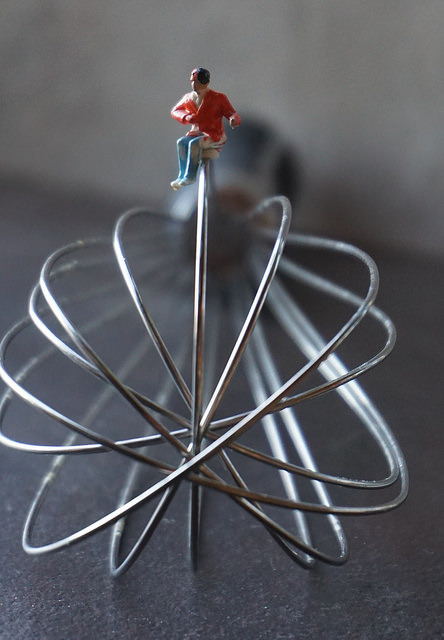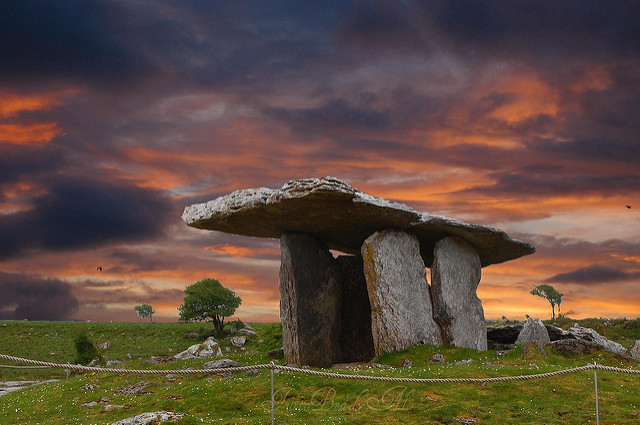Archive for the ‘Technology’ Category
The right time horizon for technology development
 Patents are the currency of technology and profits are the currency of business. And as it turns out, if you focus on creating technology you’ll get technology (and patents) and if you focus on profits you’ll get profits. But if no one buys your technology (in the form of the products or services that use it), you’ll go out of business. And if you focus exclusively on profits you won’t create technology and you’ll go out of business. I’m not sure which path is faster or more dangerous, but I don’t think it matters because either way you’re out of business.
Patents are the currency of technology and profits are the currency of business. And as it turns out, if you focus on creating technology you’ll get technology (and patents) and if you focus on profits you’ll get profits. But if no one buys your technology (in the form of the products or services that use it), you’ll go out of business. And if you focus exclusively on profits you won’t create technology and you’ll go out of business. I’m not sure which path is faster or more dangerous, but I don’t think it matters because either way you’re out of business.
It’s easy to measure the number of patents and easier to measure profits. But there’s a problem. Not all patents (technologies) are equal and not all profits are equal. You can have a stockpile of low-level patents that make small improvements to existing products/services and you can have a stockpile of profits generated by short-term business practices, both of which are far less valuable than they appear. If you measure the number of patents without evaluating the level of inventiveness, you’re running your business without a true understanding of how things really are. And if you’re looking at the pile of profits without evaluating the long-term viability of the engine that created them you’re likely living beyond your means.
In both cases, it’s important to be aware of your time horizon. You can create incremental technologies that create short term wins and consume all your resource so you can’t work on the longer-term technologies that reinvent your industry. And you can implement business practices that eliminate costs and squeeze customers for next-quarter sales at the expense of building trust-based engines of growth. It’s all about opportunity cost.
It’s easy to develop technologies and implement business processes for the short term. And it’s equally easy to invest in the long term at the expense of today’s bottom line and payroll. The trick is to balance short against long.
And for patents, to achieve the right balance rate your patents on the level of inventiveness.
Image credit – NASA’s Solar Dynamics Observatory
Choosing What To Do
 In business you’ve got to do two things: choose what to do and choose how to do it well. I’m not sure which is more important, but I am sure there’s far more written on how to do things well and far less clarity around how to choose what to do.
In business you’ve got to do two things: choose what to do and choose how to do it well. I’m not sure which is more important, but I am sure there’s far more written on how to do things well and far less clarity around how to choose what to do.
Choosing what to do starts with understanding what’s being done now. For technology, it’s defining the state-of-the-art. For the business model, it’s how the leading companies are interacting with customers and which functions they are outsourcing and which they are doing themselves. In neither case does what’s being done define your new recipe, but in both cases it’s the first step to figuring how you’ll differentiate over the competition.
Every observation of the state-of-the-art technologies and latest business models is a snapshot in time. You know what’s happening at this instant, but you don’t know what things will look like in two years when you launch. And that’s not good enough. You’ve got to know the improvement trajectories; you’ve got to know if those trajectories will still hold true when you’ll launch your offering; and, if they’re out of gas, you’ve got to figure out the new improvement areas and their trajectories.
You’ve got to differentiate over the in-the-future competition who will constantly improve over the next two years, not the in-the-moment competition you see today.
For technology, first look at the competitions’ websites. For their latest product or service, figure out what they’re proud of, what they brag about, what line of goodness it offers. For example, is it faster, smaller, lighter, more powerful or less expensive? Then, look at the product it replaced and what it offered. If the old was faster than the one it replaced and the newest one was faster still, their next one will try to be faster. But if the old one was faster than the one it replaced and the newest one is proud of something else, it’s likely they’ll try to give the next one more of that same something else.
And the rate of improvement gives another clue. If the improvement is decreasing over time (old product to new product), it’s likely the next one will improve on a new line of goodness. If it’s still accelerating, expect more of what they did last time. Use the slope to estimate the magnitude of improvement two years from now. That’s what you’ve got to be better than.
And with business models, make a Wardley Map. On the map, place the elements of the business ecosystem (I hate that word) and connect the elements that interact with each other. And now the tricky part. Move to the right the mature elements (e.g., electrical power grid), move to the middle the immature elements (things that are clunky and you have to make yourself) and move to the middle the parts you can buy from others (products). There’s a north-south element to the maps, but that’s for another time.
The business model is defined by which elements the company does itself, which it buys from others and which new ones they create in their labs. So, make a model for each competitor. You’ll be able to see their business model visually.
Now, which elements to work on? Buy the ones you can buy (middle), improve the immature ones on the far left so they move toward the central region (product) and disrupt the lazy utilities (on the right) with some crazy technology development and create something new on the far left (get something running in the lab).
Choosing what to work on starts with Observation of what’s going on now. Then, that information is Oriented with analysis, synthesis and diverse perspective. Then, using the best frameworks you know, a Decision is made. And then, and only then, can you Act.
And there you have it. The makings of an OODA loop-based methodology for choosing what to do.
For a great podcast on John Boyd, the father of the OODA loop, try this one.
And for the deepest dive on OODA (don’t start with this one) see Osinga – Science, Strategy and War.
How to Avoid a Cliff
 Much like living organisms continually evolve to secure their place in the future, technological systems can be thought to display similar evolutionary behavior. Viruses mutate so some of them can defeat the countermeasures of their host and live to fight another day. Technological systems, as an expression of a company’s desire to survive, evolve to defeat the competition and live to pay another dividend.
Much like living organisms continually evolve to secure their place in the future, technological systems can be thought to display similar evolutionary behavior. Viruses mutate so some of them can defeat the countermeasures of their host and live to fight another day. Technological systems, as an expression of a company’s desire to survive, evolve to defeat the competition and live to pay another dividend.
There are natural limits to evolutionary success in any single direction. When one trait is improved it pushes on the natural limits imposed by the environment. For example, a bacterium let loose in a friendly Petri dish will replicate until it eats all the food in the dish. Or, on a longer timescale, if the mass of a bird increases over generations when its food source is plentiful, the bird will get larger but will also get less agile. The predators who couldn’t catch the fast, little bird of old can easily catch and eat the sluggish heavyweight. In that way, there’s an edge condition created by the environmental Petri dishes and predators. And it’s the same with technological systems.
Companies and their technological systems evolve within their competitive environment by scanning the fitness landscape and deciding where to try to improve. The idea is to see preferential lines of improvement and create new technologies to take advantage of them. Like their smaller biological counterparts, companies are minimum energy creatures and want to maximize reward (profit) with minimum effort (expense) and will continue to leverage successful lines of evolution until it senses diminishing returns.
The diminishing returns are a warning sign that the company is approaching an edge condition (a Petri dish of a finite size). In landscape lingo, there’s a cliff on the horizon. In technology lingo, the rate of improvement of the technology is slowing. In either language, the edge is near and it’s time to evolve in a new direction because this current one is out of gas.
Like the bird whose mass increases over the generations when food is readily available, companies also get fat and slow when they successfully evolve in a single direction for too long. And like the bird, they get eaten by a more agile competitor/predator. And just as the replication rate of the bacterium accelerates as the food in the Petri dish approaches zero, a company that doesn’t react to a slowing rate of technological improvement is sure to outlive its business model.
Biology and technology are similar in that they try new things (create variants of themselves) in order to live another day. But there’s a big difference – where biology is blind (it doesn’t know what will work and what won’t), technology is sighted (people that create use their understanding to choose the variants they think will work best). And another difference is that biological evolution can build only on viable variants where technology can use mental models as scaffolds to skip non-viable embodiments to cross a chasm.
There’s no need to fall off the cliff. As a leading indicator, monitor the rate of improvement of your technology. If its rate of improvement is still accelerating, it’s time to develop the next line of evolution. If its rate is declining, you waited too long. It’s time to double down on two new lines of evolution because you’re behind the curve. And remember, like with the population of bacteria in the Petri dish, sales will keep growing right up until the business model runs out of food or a competitor eats you.
Image credit — Amanda
Technology, Technologists and Customers
 Henry Ford famously said if he asked people what they wanted, they would have asked for faster horses. And there’s a lot of truth to his statement. If you ask potential customers what they want next, they’ll give you an answer. And when you show them the prototype, they won’t like it. Their intentions are good and their answers are truthful, but when you give them what they ask for and put the prototype in their hands, they will experience it in a way they did not expect. It will be different than they thought. Thinking how something will be is different than physically interacting with it. That’s how it is with new things.
Henry Ford famously said if he asked people what they wanted, they would have asked for faster horses. And there’s a lot of truth to his statement. If you ask potential customers what they want next, they’ll give you an answer. And when you show them the prototype, they won’t like it. Their intentions are good and their answers are truthful, but when you give them what they ask for and put the prototype in their hands, they will experience it in a way they did not expect. It will be different than they thought. Thinking how something will be is different than physically interacting with it. That’s how it is with new things.
And just like with the horses, because they don’t know the emergent technologies and their radically different capabilities, they can’t ask for what’s possible. They won’t ask for a combustion engine that eliminates their horses because all they know is horses. They’ll ask for more horses, bigger horses or smaller ones, but they won’t ask for combustion cylinders.
The trick is to understand what people do and why they do it. Like an anthropologist, spend time watching and understanding. And, if you can, understand what they don’t do and why they don’t do it. The new and deeper understanding of their actions, along with the reasons for them, create an anchoring perspective from which to understand how emergent technologies can change their lives.
Technologies evolve along worn paths. And depending on the maturity of the technology, some worth paths are more preferential than others. For example, if fuel economy is stagnant for the last ten years it means it’s likely time for a young technology to emerge that uses a different physical principle such as battery power. Though technology’s evolutionary direction is not predictable in an exact sense, it is dispositional. Like the meteorologist can’t pinpoint where the storm center will hit the coast or predict the maximum wind speed to within one or two miles per hour, she can say which states should hunker down and tell you if the wind will be strong enough to blow out your windows. She cannot predict the specifics, but she knows there’s a storm on the horizon and she knows its character, disposition and tendencies.
Now, anchored in how people use the state-of-the-art technologies (ride horseback, ride in buggies, use a team of horses to pull a heavy wagon) look at what the new technologies want to become (horses to combustion engine) and image how people’s lives would be better (faster trips, longer pleasure rides, heavier payloads, no barns and cleaner streets.) Now, using the new technology, build a prototype and show it to customers. Put them in the driver’s seat and blow their minds. Listen to the questions they ask so you can better understand the technology from their perspective because just as they don’t understand the technology, you don’t understand what the technology means to them, the people who will buy it. Use their questions to improve the technology and the product.
Technologists know technology, technology knows what it wants to be when it grows up and customers know what they want after they see what could be. And to create a new business, it takes all three working together.
Image credit — William Creswell
The Evolution of New Ideas
 Before there is something new to see, there is just a good idea worthy of a prototype. And before there can be good ideas there are a whole flock of bad ones. And until you have enough self confidence to have bad ideas, there is only the status quo. Creating something from nothing is difficult.
Before there is something new to see, there is just a good idea worthy of a prototype. And before there can be good ideas there are a whole flock of bad ones. And until you have enough self confidence to have bad ideas, there is only the status quo. Creating something from nothing is difficult.
New things are new because they are different than the status quo. And if the status quo is one thing, it’s ruthless in desire to squelch the competition. In that way, new ideas will get trampled simply based on their newness. But also in that way, if your idea gets trampled it’s because the status quo noticed it and was threatened by it. Don’t look at the trampling as a bad sign, look at it as a sign you are on the right track. With new ideas there’s no such thing as bad publicity.
The eureka moment is a lie. New ideas reveal themselves slowly, even to the person with the idea. They start as an old problem or, better yet, as a successful yet tired solution. The new idea takes its first form when frustration overcomes intellectual inertia a strange sketch emerges on the whiteboard. It’s not yet a good idea, rather it’s something that doesn’t make sense or doesn’t quite fit.
The idea can mull around as a precursor for quite a while. Sometimes the idea makes an evolutionary jump in a direction that’s not quite right only to slither back to it’s unfertilized state. But as the environment changes around it, the idea jumps on the back of the new context with the hope of evolving itself into something intriguing. Sometimes it jumps the divide and sometimes it slithers back to a lower energy state. All this happens without conscious knowledge of the inventor.
It’s only after several mutations does the idea find enough strength to make its way into a prototype. And now as a prototype, repeats the whole process of seeking out evolutionary paths with the hope of evolving into a product or service that provides customer value. And again, it climbs and scratches up the evolutionary ladder to its most viable embodiment.
Creating something new from scratch is difficult. But, you are not alone. New ideas have a life force of their own and they want to come into being. Believe in yourself and believe in your ideas. Not every idea will be successful, but the only way to guarantee failure is to block yourself from nurturing ideas that threaten the status quo.
Image credit – lost places
A Barometer for Uncertainty
 Novelty, or newness, can be a great way to assess the status of things. The level of novelty is a barometer for the level of uncertainty and unpredictability. If you haven’t done it before, it’s novel and you should expect the work to be uncertain and unpredictable. If you’ve done it before, it’s not novel and you should expect the work to go as it did last time. But like the barometer that measures a range of atmospheric pressures and gives an indication of the weather over the next hours, novelty ranges from high to low in small increments and so does the associated weather conditions.
Novelty, or newness, can be a great way to assess the status of things. The level of novelty is a barometer for the level of uncertainty and unpredictability. If you haven’t done it before, it’s novel and you should expect the work to be uncertain and unpredictable. If you’ve done it before, it’s not novel and you should expect the work to go as it did last time. But like the barometer that measures a range of atmospheric pressures and gives an indication of the weather over the next hours, novelty ranges from high to low in small increments and so does the associated weather conditions.
Barometers have a standard scale that measures pressure. When the summer air is clear and there are no clouds, the atmospheric pressure is high and on the rise and you should put on sun screen. When it’s hurricane season and super-low system approaches, the drops to the floor and you should evacuate. The nice thing about barometers is they are objective. On all continents, they can objectively measure the pressure and display it. No judgement, just read the scale. And regardless of the level of pressure and the number of times they measure it, the needle matches the pressure. No Kentucky windage. But novelty isn’t like that.
The only way to predict how things will go based on the level of novelty is to use judgement. There is no universal scale for novelty that works on all projects and all continents. Evaluating the level of novelty and predicting how the projects will go requires good judgement. And the only way to develop good judgment is to use bad judgment until it gets better.
All novelty isn’t created equal. And that’s the trouble. Some novelty has a big impact on the weather and some doesn’t. The trick is to know the difference. And how to tell the difference? If when you make a change in one part of the system (add novelty) and the novelty causes a big change in the function or operation of the system, that novelty is important. The system is telling you to use a light hand on the tiller. If the novelty doesn’t make much difference in system performance, drive on. The trick is to test early and often – simple tests that give thumbs-up or thumbs-down results. And if you try to run a test and you can’t get the test to run at all, there’s a hurricane is on the horizon.
When the work is new, you don’t really know which novelty will bite you. But there’s one rule: all novelty will bite you until proven otherwise. Make a list of the novel elements of the and test them crudely and quickly.
The Three Rs of Innovation – Risk, Reward, and Resources
 Is it innovation or continuous improvement or is it innovation? Is it regular innovation or disruptive innovation? Is it new enough or too new? These questions are worse than meaningless as they suck emotional energy from the organization and divert emotional energy from the business objective.
Is it innovation or continuous improvement or is it innovation? Is it regular innovation or disruptive innovation? Is it new enough or too new? These questions are worse than meaningless as they suck emotional energy from the organization and divert emotional energy from the business objective.
With every initiative, there are risks, rewards, and resources. Risk generally tracks with newness, reward usually tracks with incremental customer goodness and resources are governed by the work. Risk is about the probability of tackling the newness, reward is about the size of the prize and resources are about how the work is done. There is no best amount of risk as sometimes the right amount is none and other times it’s more than everyone prefers. And there’s no best amount of reward as it depends on the company’s goals. And there’s no right amount of resources because there’s no right scope. For all three – risk, reward and resources – the right amount depends on the context.
For bottom line projects, it’s about maintaining product functionality while eliminating waste. And while there’s no right amount of risk, reward and resources, three filters (people, process, tools) can help get everyone on the same page.
Here are the escalating categories for people – no new people, move people from group A to group B, hire more people like the ones we have, hire new people with skills we don’t have. And for categories for process – no new processes, eliminate steps of existing processes, add steps to existing processes, create a process that’s new to the facility, create a process that’s new to the company, create process that’s new to the industry, create a process that’s new to the world. And for tools – no new tools, modify existing tools, buy new tools, create new tools from scratch.
There are no right answers, but if you’ve got to hire people you’ve never hired, create processes that are new-to-world, and invent new tools, it’s clear to everyone the project is pushing the envelope. And if the reward is significant and resources are plentiful, it could be a good way to go. And if there are no new hires, no new processes, and no new tools, don’t expect extravagant rewards. It’s not an exact science, but categorizing the newness in people, process, and tools and then comparing with the reward (payoff) makes clear any mismatches. And when mismatches are clear they can be managed. Resources can be added, the scope can be reduced and reward can be revisited.
For top line projects, it’s about providing novel usefulness to customers at a reasonable cost. And while risk, reward, and resources must be balanced, the filters are different. For top line, the filters are breadth of applicability, competition, is/isn’t.
Here are the escalating categories for breadth of applicability – same customer in the same application, same customers in a new application, new customers in a new market, new customers in different industry, new customers in an industry created by the project. For competition – many competitors in the same industry, fewer competitors in the same industry, fewer competitors in a different industry, no competitors (compete with no one.) And for is/isn’t – improve what is, radically improve what is, create what isn’t.
Again, no right answers. But the plan is to sell to the same customers into markets with the same powerful competitors with only a slight improvement to the existing product, don’t expect radical rewards and don’t run a project that consumes significant resources. And, if the plan is to create a whole new industry where there are no competitors and it requires an entirely new service that doesn’t yet exist, the potential reward should be spectacular, expect to allocate a boatload of resources and prepare for the project to take longer than expected or to be cancelled before completion.
Balancing risk, reward and resources is not an exact science. And the only way to get good at it is to calibrate new projects based on previous projects. To start the calibration process, try the process on your most recent completed projects. Categorize the projects with the relevant filters and define the resources consumed and the realized rewards. And when planning the next project, categorize with the filters and define the resource plan and planned rewards and see how they compare with the completed projects. And if there are mismatches, reconcile them with the realities of the previous projects.
Image credit – Ian Sane
How To Reduce Innovation Risk
 The trouble with innovation is it’s risky. Sure, the upside is nice (increased sales), but the downside (it doesn’t work) is distasteful. Everyone is looking for the magic pill to change the risk-reward ratio of innovation, but there is no pill. Though there are some things you can do to tip the scale in your favor.
The trouble with innovation is it’s risky. Sure, the upside is nice (increased sales), but the downside (it doesn’t work) is distasteful. Everyone is looking for the magic pill to change the risk-reward ratio of innovation, but there is no pill. Though there are some things you can do to tip the scale in your favor.
All problems are business problems. Problem solving is the key to innovation, and all problems are business problems. And as companies embrace the triple bottom line philosophy, where they strive to make progress in three areas – environmental, social and financial, there’s a clear framework to define business problems.
Start with a business objective. It’s best to define a business problem in terms of a shortcoming in business results. And the holy grail of business objectives is the growth objective. No one wants to be the obstacle, but, more importantly, everyone is happy to align their career with closing the gap in the growth objective. In that way, if solving a problem is directly linked to achieving the growth objective, it will get solved.
Sell more. The best way to achieve the growth objective is to sell more. Bottom line savings won’t get you there. You need the sizzle of the top line. When solving a problem is linked to selling more, it will get solved.
Customers are the only people that buy things. If you want to sell more, you’ve got to sell it to customers. And customers buy novel usefulness. When solving a problem creates novel usefulness that customers like, the problem will get solved. However, before trying to solve the problem, verify customers will buy what you’re selling.
No-To-Yes. Small increases in efficiency and productivity don’t cause customers to radically change their buying habits. For that your new product or service must do something new. In a No-To-Yes way, the old one couldn’t but the new one can. If solving the problem turns no to yes, it will get solved.
Would they buy it? Before solving, make sure customers will buy the useful novelty. (To know, clearly define the novelty in a hand sketch and ask them what they think.) If they say yes, see the next question.
Would it meet our growth objectives? Before solving, do the math. Does the solution result in incremental sales larger than the growth objective? If yes, see the next question.
Would we commercialize it? Before solving, map out the commercialization work. If there are no resources to commercialize, stop. If the resources to commercialize would be freed up, solve it.
Defining is solving. Up until now, solving has been premature. And it’s still not time. Create a functional model of the existing product or service using blocks (nouns) and arrows (verbs). Then, to create the problem(s), add/modify/delete functions to enable the novel usefulness customers will buy. There will be at least one problem – the system cannot perform the new function. Now it’s time to take a deep dive into the physics and bring the new function to life. There will likely be other problems. Existing functions may be blocked by the changes needed for the new function. Harmful actions may develop or some functions will be satisfied in an insufficient way. The key is to understand the physics in the most complete way. And solve one problem at a time.
Adaptation before creation. Most problems have been solved in another industry. Instead of reinventing the wheel, use TRIZ to find the solutions in other industries and adapt them to your product or service. This is a powerful lever to reduce innovation risk.
There’s nothing worse than solving the wrong problem. And you know it’s the wrong problem if the solution doesn’t: solve a business problem, achieve the growth objective, create more sales, provide No-To-Yes functionality customers will buy, and you won’t allocate the resources to commercialize.
And if the problem successfully runs the gauntlet and is worth solving, spend time to define it rigorously. To understand the bedrock physics, create a functional of the system, add the new functionality and see what breaks. Then use TRIZ to create a generic solution, search for the solution across other industries and adapt it.
The key to innovation is problem solving. But to reduce the risk, before solving, spend time and energy to make sure it’s the right problem to solve.
It’s far faster to solve the right problem slowly than to solve the wrong one quickly.
Image credit – Kate Ter Haar
Before you can make a million, you’ve got to make the first one.
 With process improvement, the existing process is refined over time. With innovation, the work is new. You can’t improve a process that does not yet exist. Process creation, yes. Process improvement, no.
With process improvement, the existing process is refined over time. With innovation, the work is new. You can’t improve a process that does not yet exist. Process creation, yes. Process improvement, no.
Standard work, where the sequence of process steps has proven successful, is a pillar of the manufacturing mindset. In manufacturing, if you’re not following standard work, you’re not doing it right. But with innovation, when the work is done for the first time, there can be no standard work. In that way, if you’re following the standard work paradigm, you are not doing innovation.
In a well-established manufacturing process, problems are tightly scoped and constrained. There can be several ways to solve it and one of the ways is usually better than the others. Teams are asked to solve the problem three or four ways and explain the rationale for choosing one solution over the other. With innovation it’s different. There may not be a solution, never mind three. With innovation, it’s one-in-a-row solution. And the real problem is to decide which problem to solve. If you’re asked to use Fishbone diagrams to solve the problem three or four ways, you’re not doing innovation. Solve it one way, show a potential customer and decide what to do next.
With manufacturing and product development, it’s all about Gantt charts and hitting dates. The tasks have a natural precedence and all of them have been done before. There are branches in the plan, but behind them is clear if-then logic. With innovation, the first task is well-defined. And the second task – it depends on the outcome of the first. And completion dates? No way. If you can predict the completion date, you’re not doing innovation. And if you’re asked for a fully built-out Gantt chart, you’re in trouble because that’s a misguided request.
Systems in manufacturing can be complicated, with lots of moving parts. And the problems can be complicated. But given enough time, the experts can methodically figure it out. But with innovation, the systems can be complex, meaning they are not predictable. Sometimes parts of the system interact strongly with other parts and sometimes they don’t interact at all. And it’s not that they do one or the other, it’s that they do both. It’s like they have a will of their own, and, sometimes, they have a bad attitude. And if it’s a new system, even the basic rules of engagement are unknown, never mind the changing strength of the interactions. And if the system is incomplete and you don’t know it, linear thinking of the experts can’t solve it. If you’re using linear problem solving techniques, you’re not doing innovation.
Manufacturing is about making one thing a million times. Innovation is about choosing among the million possibilities and making one-in-a-row, and then, after the bugs are worked out, making the new thing a million times. But one-in-a-row must come first. If you can’t do it once, you can’t do it a million times, even with process improvement, standard work, Gantt charts and Fishbone diagrams.
Image credit jacinta lluch valero
Innovation and the Mythical Idealized Future State
 When it’s time to innovate, the first task is usually to define the Idealized Future State (IFS). The IFS is a word picture that captures what it looks like when the innovation work has succeeded beyond our wildest dreams. The IFS, so it goes, is directional so we can march toward the right mountain and inspirational so we can sustain our pace over the roughest territory.
When it’s time to innovate, the first task is usually to define the Idealized Future State (IFS). The IFS is a word picture that captures what it looks like when the innovation work has succeeded beyond our wildest dreams. The IFS, so it goes, is directional so we can march toward the right mountain and inspirational so we can sustain our pace over the roughest territory.
For the IFS to be directional, it must be aimed at something – a destination. But there’s a problem. In a sea of uncertainty, where the work has never been done before and where there are no existing products, services or customers, there are an infinite number of IFRs/destinations to guide our innovation work. Open question – When the territory is unknown, how do we choose the right IFS?
For the IFS to be inspirational, it must create yearning for something better (the destination). And for the yearning to be real, we must believe the destination is right for us. Open question – How can we yearn for an IFS when we really can’t know it’s the right destination?
Maps aren’t the territory, but they are a collection of all possible destinations within the design space of the map. If you have the right map, it contains your destination. And for a long time now, the old paper maps have helped people find their destinations. But on their own maps don’t tell us the direction to drive. If you have a map of the US and you want to drive to Kansas, in which direction do you drive? It depends. If in California, drive east; if in Mississippi, drive north; if in New Hampshire, drive west; and in Minnesota, drive south. If Kansas is your idealized future state, the map alone won’t get your there. The direction you drive depends on your location.
GPS has been a nice addition to maps. Enter the destination on the map, ask the satellites to position us globally and it’s clear which way to drive. (I drive west to reach Kansas.) But the magic of GPS isn’t in the electronic map, GPS is magic because it solves the location problem.
Before defining the idealized future state, define your location. It grounds the innovation work in the reality of what is, and people can rally around what is. And before setting the innovation direction with the IFS, define the next problems to solve and walk in their direction.
Image credit – Adrian Brady
Forecasting The Next Big Technology
 When a hurricane is on the horizon, we are all glued to our TVs. We want to know where it track so we know we’ll be safe. Will it track north and rumble over the top of us or will it track east and head out to sea? This is not trivial. In one scenario we lose our house and in the other the crazy surfers get to ride huge waves.
When a hurricane is on the horizon, we are all glued to our TVs. We want to know where it track so we know we’ll be safe. Will it track north and rumble over the top of us or will it track east and head out to sea? This is not trivial. In one scenario we lose our house and in the other the crazy surfers get to ride huge waves.
The meteorologist shows us a time-lapse of the storm center hour-by-hour. It was one hundred miles off shore an hour ago, it’s fifty miles off shore now and it will hit the shoreline in an hour. Drawing a line from where it was, through its location in the moment, the meteorologist can extrapolate where it will be an hour from now. In the short term, the storms trajectory will be unchanged and its momentum will help it maintain its pace. It’s pretty clear to everyone where the storm will be in an hour. No magic here.
But the good meteorologists can forecast a hurricane’s path days in advance. In a phenomenological way, they use behavior models of past storms, assume this storm is like past storms, turn the crank and forecast its trajectory. And they’re right more times than not. And they’re right enough to determine who should evacuate and who should sit tight. This is borderline magic.
The best meteorologists know where hurricanes want go because they understand hurricanes. They know hurricanes want to run in straight lines, if not follow gentle curves. They know hurricanes get anxious when they hop from sea to land, and they know, given the choice, will skirt the coastline and head back home to the salt water. Meteorologists know the rules hurricane’s live by and use that knowledge to tighten their forecast of the storm’s path.
Just as hurricanes have a desire to follow their hearts, technologies have a similar desire climb the evolutionary ladder. Just as hurricanes behave like their predecessors, technologies behave like their grandparents, aunts and uncles. And just as a meteorologist, using their knowledge of historical patterns and an understanding of hurricane genetics can forecast the path of a hurricane, technologists can forecast the path of technologies using historical patterns and an understanding of what technologies want.
And like with hurricanes, the best way to forecast the path of a technology is to define where it was, draw a line through where it is and project its trajectory into the future. Like hurricanes, technologies move in straight lines or gentle S-curves, so their next move is easy to forecast. If a technology has improved year-over-year, it will likely continue to improve. And if this year’s performance is the same as last year, it’s behavior will remain unchanged going forward. That’s how it goes with technologies.
The best technologists are like horse whisperers in that they can hear the inner voice of technologies. They know when a technology is ready to grow from infant to adolescent and know when a technology is ready to retire. The best technologists can read the tea leaves of the patent landscape and, knowing the predisposition of technologies, can forecast the next evolution. But just as some ranch owners don’t believe in horse whisperers, some company leaders don’t believe technology whisperers can forecast technologies.
But for believers and non-believers alike, it’s more effective to compare forecasting capabilities of technologists with the forecasting capabilities of meteorologists. The notions of trajectory and momentum have clear physical interpretations for hurricanes and technologies, and historical models of storm trajectories map directly to evolutionary paths of technologies.
If you’re looking to forecast where the next big storm will make landfall, hire a great meteorologist. But if you’re looking to forecast when the next technology will rip the roof off your business model, hire a great technology whisperer.
Image credit – NASA
 Mike Shipulski
Mike Shipulski